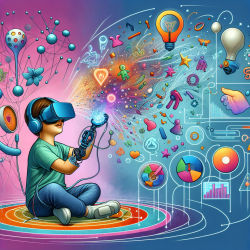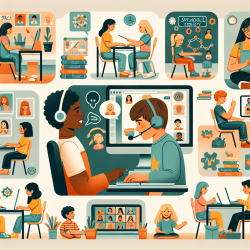The latest research on the use of haptic feedback in virtual reality (VR) for children with dystonic cerebral palsy (CP) offers promising results that could revolutionize pediatric rehabilitation. The study titled "Rehabilitation for Children With Dystonic Cerebral Palsy Using Haptic Feedback in Virtual Reality: Protocol for a Randomized Controlled Trial" outlines a new, data-driven approach to improving motor outcomes for these children.
Understanding the Research
The study, conducted by a multidisciplinary team, focuses on the impact of VR game-based interventions that incorporate robotic haptic feedback. The primary goal is to enhance movement outcomes for children with dystonic CP, who often experience involuntary muscle activity that disrupts normal movement patterns.
Key Findings
The research protocol includes several innovative aspects:
- Haptic Feedback: Utilizing robotic haptic feedback to provide real-time sensory input, which can help improve motor control.
- VR Environment: Creating an engaging and motivating VR game to maintain children's attention and participation.
- Quantitative Measures: Employing advanced metrics such as the smoothness index of movement to assess improvements.
Implementing the Findings in Practice
For practitioners looking to incorporate these findings into their therapy sessions, here are some actionable steps:
- Integrate VR Technology: Consider investing in VR equipment that includes haptic feedback capabilities. This technology can be a powerful tool in your therapeutic arsenal.
- Focus on Engagement: Design or choose VR games that are not only therapeutic but also engaging and fun for children. The motivation provided by an enjoyable activity can significantly enhance therapy outcomes.
- Use Data-Driven Metrics: Employ quantitative measures like the smoothness index to track progress and adjust therapy plans accordingly. Data-driven decisions can lead to more effective interventions.
Encouraging Further Research
While this study provides a robust framework, there is always room for further exploration. Practitioners are encouraged to:
- Conduct Pilot Studies: Implement small-scale studies within your practice to gather preliminary data and refine your approach.
- Collaborate with Researchers: Partner with academic institutions to contribute to larger, more comprehensive studies.
- Share Findings: Publish your results and experiences to contribute to the growing body of knowledge in this field.
To read the original research paper, please follow this link: Rehabilitation for Children With Dystonic Cerebral Palsy Using Haptic Feedback in Virtual Reality: Protocol for a Randomized Controlled Trial.










